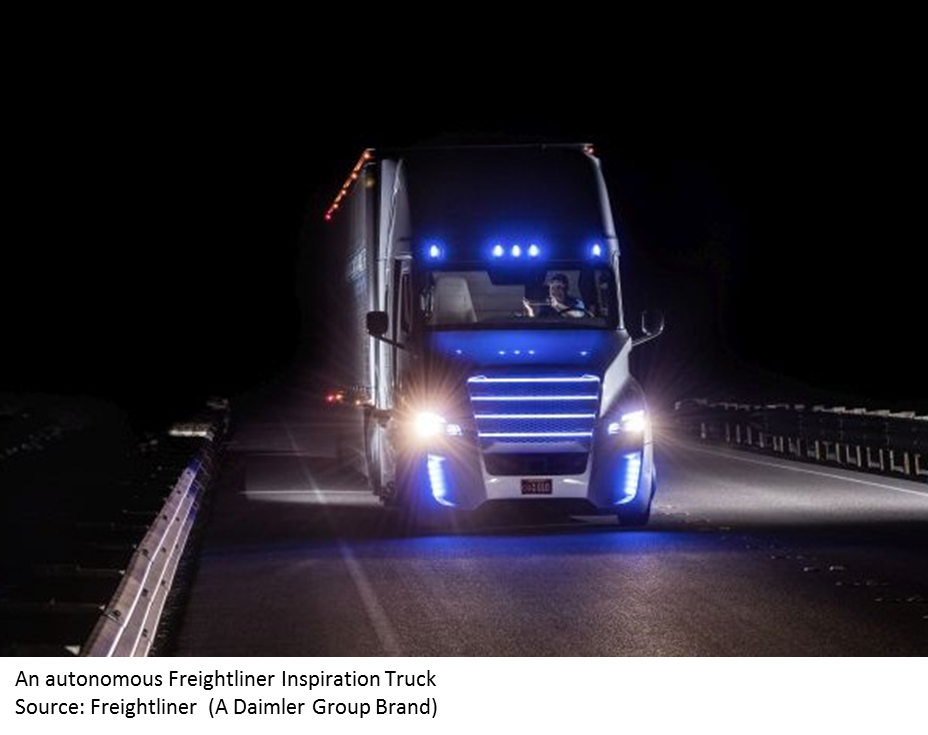Shipping and Logistics

ATA Forecasts Shortage of 48,000 Truck Drivers by End of the Year
Written by Sandy Williams
October 14, 2015
A new report by the American Trucking Association reveals that by the end of 2015 the industry will be short nearly 48,000 drivers. By 2024, if the current trend continues, the industry may find itself in need of almost 175,000 drivers.
The shortage is not a new issue. According to ATA, the problem has been ongoing for the past 15 years. In 2005, a shortage of 20,000 drivers was documented but during the 2008 recession, plummeting industry volume nearly eliminated the driver deficit. Many of those drivers were permanently lost to other industries. As the economy began recovering in 2011, the shortage returned, climbing to 38,000 by 2014.
Where are all the drivers? Perhaps fishing or playing with grandchildren… Roughly 45 percent of demand for drivers is caused by attrition through retirement. The current median age of drivers in the industry is 49 and it has become increasingly difficult to attract younger drivers to the profession. In order to drive a tractor-trailer across a state-line drivers must be 21, so the 18-21 demographic is largely unavailable to the industry. By time they reach 21, they have committed to other career paths.
The second largest demand, 33 percent, comes from industry growth. According to American Transportation Research Institute (ATRI), 68.9 percent of all freight tonnage is moved by trucks on America’s highways. As the economy grows so does manufacturing and, in turn, demand for freight transportation.
ATA found in its survey that quality of drivers is also a factor in the shortage.
ATA Chief Economist Bob Costello said. “Fleets consistently report receiving applications for open positions, but that many of those candidates do not meet the criteria to be hired. According our research, 88% of carriers said most applicants are not qualified.”
In the American Transportation Research Institute (ATRI) 2014 survey industry concerns for motor carrier executives, driver shortage topped the list. To keep up with demand, the industry needs to recruit an average of 89,000 new drivers per year for the next ten years. How can that be accomplished?
“The latest driver shortage numbers out of ATA punctuate how serious this issue is for the entire supply chain,” said ATRI President and CEO Rebecca Brewster. “Nearly 70 percent of the nation’s tonnage is hauled on trucks and when trucking fleets have trouble filling seats with qualified drivers, the impacts ripple throughout. Faced with the driver shortage challenge and with an eye toward ensuring that they retain the qualified drivers they currently have, one thing motor carriers will look closely at is how their supply chain partners treat their drivers.
The ATA report notes that drivers often complain of mistreatment at shipping and receiving facilities. The complaints range from long wait times for loading and unloading to restricted access to restrooms. Receiving respect from supply chain companies would make driving a more attractive career choice said ATA.
Improving the image of truck drivers is one course of action that the industry is working on. Brewster noted at SMU’s recent Steel Market Summit that the “national policy is to get a college degree” which, although it does not preclude a career in the trucking industry, assumes the graduate will do something other than become a truck driver. The industry needs to find ways to encourage and foster vocational learning focused on trucking, said Brewster, and bridge the gap between high school and a trucking career. ATA suggests lowering the age minimum for interstate driving to capture the 18-20 year old demographic.
Efforts are also being made to hire veterans and encourage women to enter the trucking industry. Although, women make up 47 percent of the U.S. workforce, they comprise only 6 percent of all truck drivers.
 Driver wages are beginning to increase significantly, said ATA, due to the shortage. Sign-on bonuses are used to recruit drivers and also to lure them from other carriers. In ATA’s 2014 Driver Compensation Study, approximately 50 percent of for-hire truckload carriers offered signing bonuses with the median bonus amount $1,500. Efforts are being made to reduce travel distances to provide more at-home time for drivers.
Driver wages are beginning to increase significantly, said ATA, due to the shortage. Sign-on bonuses are used to recruit drivers and also to lure them from other carriers. In ATA’s 2014 Driver Compensation Study, approximately 50 percent of for-hire truckload carriers offered signing bonuses with the median bonus amount $1,500. Efforts are being made to reduce travel distances to provide more at-home time for drivers.
One of the most innovative ideas for reducing driver shortage is autonomous trucks. The idea is not as futuristic as one might think. Daimler, Mercedes and Peterbilt are already testing autonomous 18 wheelers. Although the trucks still require a driver they are expected to improve the driver’s quality of life by reducing stress. The technology would also give trucking industry a more exciting appeal to young potential drivers.
PSA International in Singapore is beginning trials of “platoon” truck convoys in which the lead truck has a driver and other driverless vehicles follow along. The system is currently slated for use at the port for inter-terminal haulage along a 10 kilometer highway test route.
“Our work shows the great and growing need for drivers,” said Costello, “but we also highlight several solutions including increasing driver pay, getting drivers more time at home, as well as improving the image of the driver and their treatment by all companies in the supply chain. Make no mistake, the driver shortage is a challenge, but it is not an insurmountable one.

Sandy Williams
Read more from Sandy WilliamsLatest in Shipping and Logistics

US Great Lakes iron ore cargoes down notably through May
The Lake Carriers' Association reported a considerable decline in monthly iron ore shipments from US ports on the Great Lakes.

Wittbecker: West Coast port congestion
What's going on in West Coast ports?

Wittbecker: Mexico invests in port capacity despite US tariff troubles
The Mexican government aims to transform Manzanillo into the largest seaport in Latin America, capable of processing some 10 million TEU (20-foot equivalent units) per year by 2030. It is already Mexico's largest port and the third largest in Latin America, handling nearly 4 million 20-foot containers in 2024.

Wittbecker on Aluminum: When do the tariffs reach Main Street?
Containers sailing from China in April are down 15%-20% and Hapag Lloyd says their future bookings transpacific are down 30%.

Wittbecker on Aluminum: US-China trade war clobbers cross-Pacific trade
Container shipping lines have sharply increased blank sailings on Transpacific routes in response to escalating trade tensions between the US and China.
